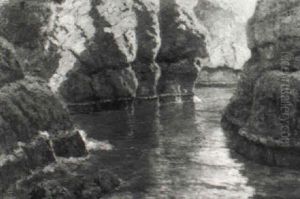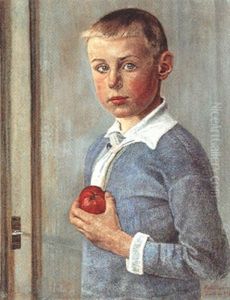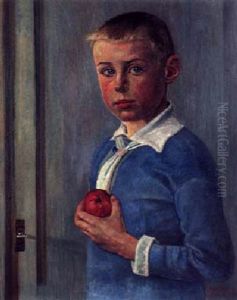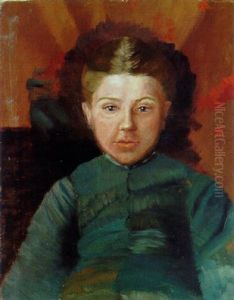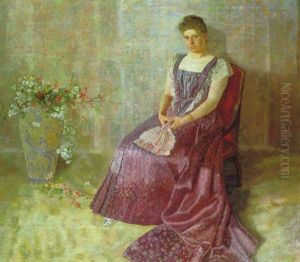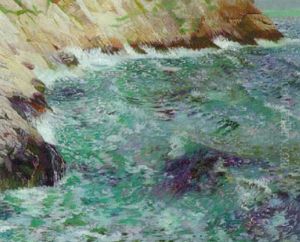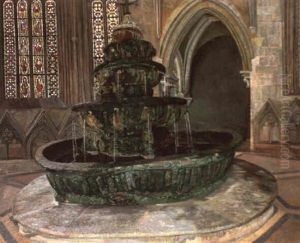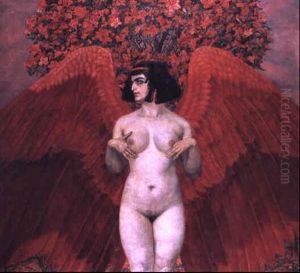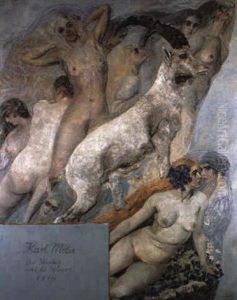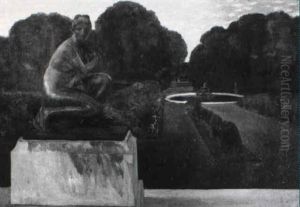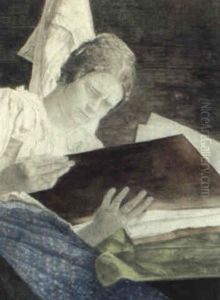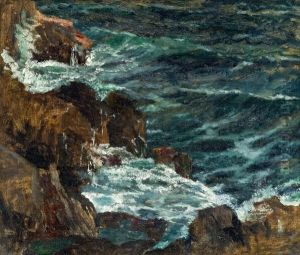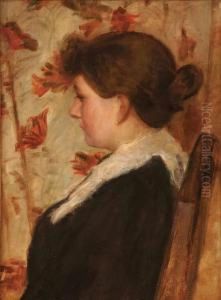Karl Mediz Paintings
Karl Mediz was born on December 18, 1868, in Vienna, Austria, into an era when the Austro-Hungarian Empire was a vibrant centre for the arts and culture. He was a painter, graphic artist, and illustrator, known for his distinct contribution to the Symbolist movement, which sought to express the mystical and emotional aspects of human experience.
Mediz received his artistic training at the Academy of Fine Arts Vienna, where he studied under notable artists such as Christian Griepenkerl. His early work was influenced by the academic and historical painting styles of the 19th century, but he gradually shifted towards Symbolism, embracing themes of nature, mysticism, and the metaphysical, which became hallmarks of his oeuvre.
In 1891, Karl Mediz married Emilie Mediz-Pelikan, a talented artist who shared his passion for painting and became his lifelong collaborator. The couple moved to Dresden in 1893, where they became integral parts of the local artistic community, contributing significantly to its development. Their home became a meeting place for artists and intellectuals, fostering an environment of creative exchange.
Throughout his career, Mediz exhibited his work extensively, participating in shows alongside other prominent artists of his time. He was praised for his ability to capture the ephemeral qualities of light and atmosphere, often employing a palette of soft, muted colors to evoke mood and emotion. His landscapes, in particular, are noted for their poetic and sometimes haunting qualities, reflecting a deep connection to the natural world.
In addition to his paintings, Mediz also created a number of graphic works and illustrations, demonstrating versatility across different media. His artistic vision was characterized by a blend of realism and fantasy, capturing the imagination of audiences and contributing to the broader Symbolist movement in Europe.
Karl Mediz's legacy is preserved in various collections and museums, where his work continues to be studied and appreciated for its unique contribution to early 20th-century art. Despite facing challenges, including periods of financial difficulty and the tumultuous backdrop of World War I and II, Mediz remained dedicated to his artistic pursuits until his death on October 7, 1945, in Dresden, Germany. His life and work remain a testament to the enduring power of art to capture the depth and complexity of the human spirit.

